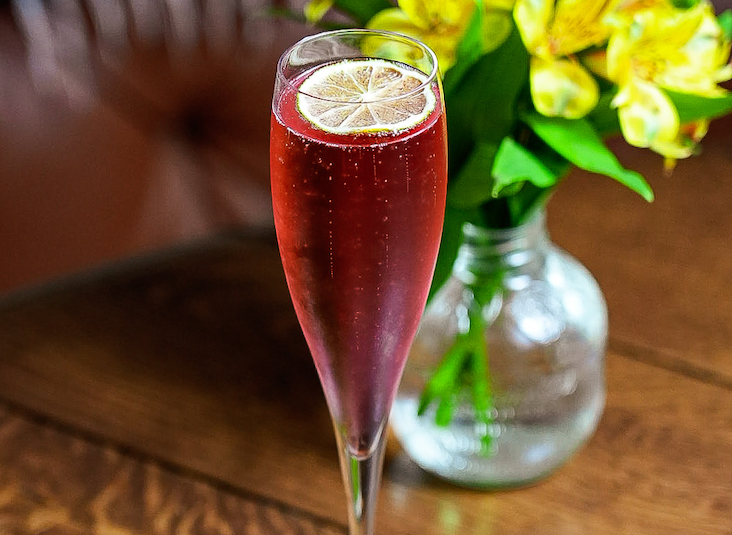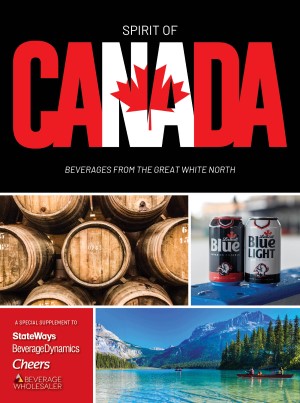Photography by Ronnie Tsai
Styling by Catherine Wong
In our increasingly globalized world, it’s becoming more and more difficult to spot national traits in beer. Sure, the Brits love their best bitters and the Irish their stouts, but each of those traditional beer styles has long since been outstripped both in popularity and sales by continental lagers. And while the Belgians may still be known for their strong and eclectic brews, the rapidly growing experimental streak that has taken hold amongst craft brewers in the United States, Canada, New Zealand and even Japan now means they hardly are unique in that regard.
But still, some beer preferences do persist. The average German today might drink less beer, but when he does reach for a bottle or a stein, chances are it’s going to be filled with pale lager or wheat beer. Their neighbors, the Czechs, still prefer pilsners, and the Aussies like their beer pale, crisp and very, very cold.
And Americans drink light beer.
The numbers speak for themselves. While all the talk was about growth in the premium, craft and imported beer categories, from 2006 to 2007 the top five selling light beers increased sales by a collective 33.1 million cases, and the overall light beer segment grew by 2.5 percent, according to preliminary data gathered by The Beverage Information Group, formerly the Adams Beverage Group. Bud Light, not only the top-selling light beer but the number one beer brand in America, grew three percent, while Miller Lite increased sales one percent and Coors Light gained a significant 4.7 percent thanks to heavy marketing pushes. Light beers may not be the media darlings that are the strange, strong and hoppy craft brews, but there is no question that light beer means big sales.
Still, even within this apparently straightforward category, changes are afoot. Where making hay from the light beer segment might once have been as simple as stocking the Big Three category players—Bud Light, Miller Lite and Coors Light—maximizing light beer’s potential today requires a little more imagination.
“People are now more loyal to category than brand,” notes writer and beer expert Lew Bryson, who led a seminar on the evolving nature of beer styles in January at the 2008 Cheers Beverage Conference, held in Miami. “If someone wants a light beer and their normal brand is not available, they will generally pick whichever light is carried.” This, Bryson notes, means operators could conceivably free up tap and fridge space for other styles and brands of beer. But, he adds, “Variety is one of the strongest trends in the beer market today. You ignore that at your peril.”
Variety, of course, comes in many forms, including a variety of non-traditional light beers. Where once there were but a handful of lights from which to choose, now there are imported lights, craft brewed lights and, coming soon, even premium light beers from the company that started it all.
As of February, Miller began test marketing a trio of so-called “craft-style light beers” in four markets. Called the Miller Lite Brewers Collection, the new family of premium light beers features Wheat, Amber and Blonde Ale, all brewed to recipes that result in fewer calories and carbohydrates.
According to the company, the Miller Lite Brewers Collection is targeting three trends in the beer market: the shift toward light beer, a desire for more variety and premiumization.
Nor is Miller alone in seeking to expand the light beer category. In recent years, we have seen the arrival of various imported light beers, including the resoundingly successful Heineken Light, which grew by an estimated 25 percent in 2007, according to The Beverage Information Group, as well as craft-brewed light beers such as Samuel Adams Light, which posted 12.5 percent growth last year.
The premiumization of light beer is a legitimate trend, says Julie Bradford, editor of All About Beer Magazine. Ordering a light beer has become a matter of preference rather than the lifestyle choice it is for someone who drinks light in order to lose weight, she says. “But, the light beer drinker has been given almost zero taste choice, so I could see where offering light beer alternatives with a greater range of flavors, if properly handled, could be very successful.”
One example of such a successful offering is Heineken Light, which Steve Riley, vice president of operations for the Houston-based, 18-unit Hospitality USA, which manages Baker St. Pub & Grill and Sherlock’s, describes as “probably our most sought-after beer.”
“Although new light beers don’t seem to be top of mind in the way that, say, craft beers are today, we still get a lot of people asking about when we’ll see Heineken Light on draft,” says Riley. “Along those same lines, we’ve also had a strong response to Sam Adams Light.”
And there may be more on the way. Kip Snider, corporate beverage director for Yard House, the 18-unit, Irvine, Calif.-based restaurant that claims to have the world’s largest selection of draft beer, says he’s heard a lot recently about the development of light hefeweizens, or German-style wheat beers. He quickly adds that they are “still being worked on and there’s nothing official yet,” though, so light hefeweizens remain just a rumor. In broader terms, Snider says he expects movement toward flavored light beers along the lines of Miller Chill.
Ultimately, however, flavor could prove both a blessing and a curse for the light beer segment. All About Beer’s Bradford relates a cautionary tale of the early days of the Boston Beer Company: “The first light beer it came out with, Lightship, was a terrific beer but ran into trouble, I think, because it had too much flavor for the category. The new Sam Adams Light is doing well because it has a lighter taste but still offers a craft beer appeal.”
Perhaps, then, what all this portends for the future is the creation of a new segment, loosely categorized as premium light beer, or, as Miller would put it, “craft-style light.” Such a segment certainly would be of interest to Snider at Yard House as he plans the tap selection for the company’s new Yard House Bar & Grill concept, set to debut this May.
“With only 60 taps, fewer than half of what we have at our smallest Yard House, there just won’t be room for the Big Three lights. So, maybe we’ll go with the two most popular in the region,” Snider says. “A premium light, however, would certainly merit consideration on its own.” l
A veteran beer writer and brewing industry observer, Stephen Beaumont is the author of five books on beer, and a leader in beer education for service industry professionals. He travels extensively, hosting beer tastings and beer dinners, and serves as beer consultant to a diverse range of hospitality companies.
ABV: The Other Side of Light
While most Americans associate light beer first and foremost with finding fewer calories in their glass, Canadians see their country’s lights primarily as beers with lower alcohol content since the average light beer in Canada contains four percent alcohol by volume while most regular beers run a percentage point higher.
In fact, this equation of fewer calories and lower alcohol is correct on both sides of the border. Although other factors such as residual sugar can have an impact on beer’s caloric content, for the most part, as a story on the Canadian edition of the Weight Watchers website notes, “alcohol is where the calories hide—seven calories per gram.”
Hence the findings of a study by Lester Hankin and the Connecticut Agricultural Experiment Station, in cooperation with the Excise Tax Division of the Connecticut Department of Revenue Service, which concluded after an analysis of 163 regular and 26 light beers that the average alcohol content of the latter was 4.1 percent by volume as compared to an average five percent for regular beer. This difference corresponds directly with the report’s findings on the average calorie content for each type of beer, with an average of 43 calories per 100 ml for regular beer and 32 calories per 100 ml for light beer (a 12-ounce beer contains 355 ml).
Low carb beers such as Michelob Ultra generally fall within the same low alcohol, lower calorie equation since most are about four percent to 4.3 percent alcohol by volume.
For customers in search of beers that are low in calories but high in flavor intensity, one direction to lead them in is specialty beers that are lighter in alcohol, such as Irish-style dry stout, typically +/-4 percent alcohol, Czech pilsner, +/-4.25 percent alcohol, and American porter, often around four percent alcohol but sometimes higher. The bigger bodies of such beers mean slightly higher calorie counts, but some beer aficionados will find that’s a sacrifice worth making.



